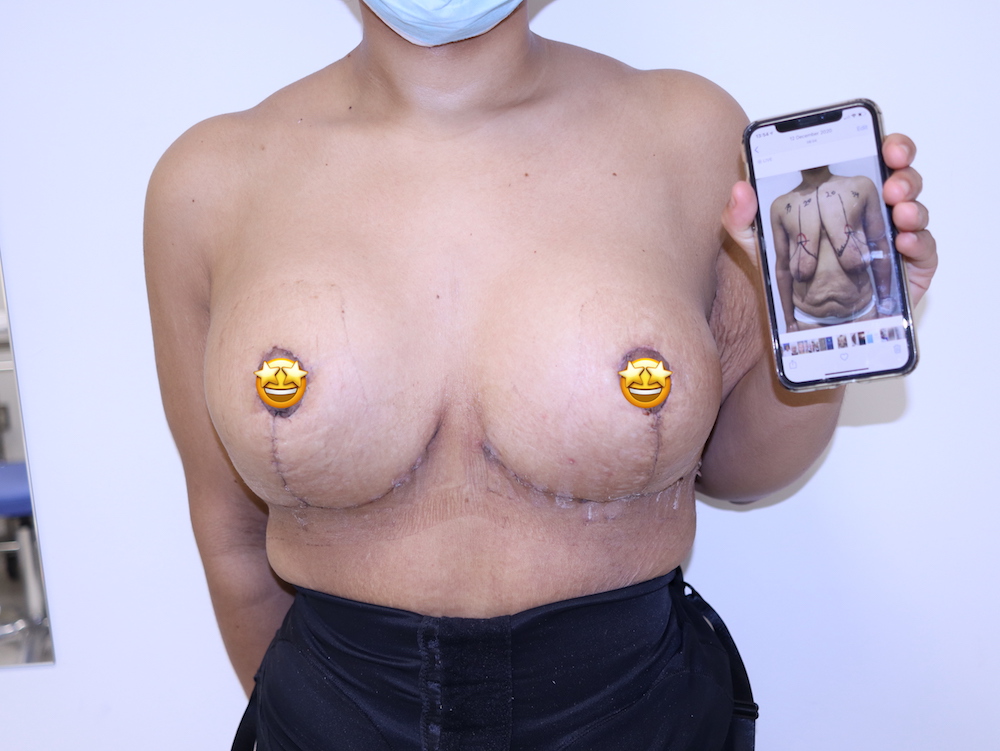Scarring is a side effect of all surgical procedures and is an important topic that should be addressed. Although the presence of scarring is almost a given, there are a number of variables which can influence the amount of scarring and some things you can do to reduce how noticeable scarring is. In this blog we explore some of the most effective ways to reduce and manage scarring following your cosmetic surgery procedures.
What causes scarring?
Whenever damage is caused to the skin, there is a possibility that scarring will occur.
The Incisions made, during the cosmetic surgery procedure, usually require cutting through layers of the skin and scarring is an unavoidable result of the healing process. The scar is what is left AFTER healing has commenced. Therefore if you have oozing or bleeding from a wound it is NOT because it is not scarring properly but instead this suggests that the wound is not healing properly.
Factors that are out of your control that may influence scarring
Although there is a number of lifestyle changes that you can make that will help with the healing of scars, there are also a number of factors that you are unable to control.
Your age is one of these things. Older people may have less collagen in their skin and this means that scars will take longer to heal. If you are suffering from a chronic disease such as cancer, diabetes or lymphedema then wounds will heal more slowly. Your doctor should be aware of any medical conditions before you undergo surgery. Ethnic background also has inevitable effect on scaring. The darker your skin is naturally, the worse the scaring will be after healing.
What will the surgeon do to reduce scarring?
Although scarring will always occur, a good surgeon will do all they can to ensure that scars are less noticeable and heal more easily. A highly skilled and experienced surgeon will do everything within their control to minimise scarring which is why it’s important to do your research before booking your cosmetic procedure. All cosmetic procedures should also be tailored to the patient and their needs.
A good surgeon will ensure that any incisions they make during the procedure are in a discreet place on the body and that they are smooth cuts, rather than jagged, as these take less time to heal and leave smaller scars. Surgical techniques such as extensive internal stitches to support the wound from the inside out and small stitches on external incisions can also help. Your surgeon can also use fine sutures to close the skin, which will help to reduce the scarring as well as using specific dressings that will aid the healing process.
What to do before your surgery
There are some lifestyle factors which can affect how your scars heal. You should ensure that you’re eating a balanced diet and living an active lifestyle before any surgery to help with the healing process.
Diet
Eating a healthy diet can help your body to heal more effectively following surgery. Make sure you’re eating plenty of foods which are rich in vitamins and minerals like iron, zinc and vitamin C.
Weight
Linked with diet is your weight. Obesity can lead to issues both during and after surgery as it limits the blood supply to adipose tissue which can delay healing. If you are planning on having surgery and you are obese, you should speak to your doctor beforehand.
Smoking
If you’re a smoker it’s a good idea to try and give up before having surgery. The smoke from cigarettes can affect how much oxygen reaches the wound and can slow down healing as well as increasing the risk of infection.
Of course, there are lots of additional health benefits to giving up smoking too so it’s never a bad idea to quit!
How to reduce the appearance of scarring post-surgery
Your surgeon will go through aftercare instructions with you following your surgery and this will include details on what you can do to minimise scarring. Scars naturally reduce in colour with age. Therefore your scar is likely to appear much redder initially and then will lighten with time. It’s impossible to determine the end colour however as this is unique to the individuals skin tone and other factors.
Keloid scars
Keloid scars are rare and are much redder, swollen and angry in appearance, in comparison to traditional scarring and form when there is too much collagen. It is not really possible to determine whether you will get these until your body moves through the healing process. If you suspect you suffer with this it’s important you talk to your surgeon for advice of how to treat them.
Keep the area clean
Following the guidance of your surgeon, make sure you change your dressings as required and do not do anything that is likely to pull at the skin that is surrounding the area of incision. The less stress and strain that you put on the area will result in a neater result. Also make sure you keep the area clean to avoid infection.
Dressings and compression garment
It is important to wear your dressings and compression garments as instructed. The compression garment is designed to increase blood circulation and the transportation of nutrients to the area where you’ve had surgery.
This helps to manage the swelling and fluid retention that you will experience after your surgery. It helps with discomfort, bruising and pressure on the wounds and this can help to reduce the visibility of scars in the longer term. Your dressings will help to control bleeding and protect the cells, which have newly formed to help with healing and again assist with the resulting scarring.
Exercise
You should avoid exercise which will put pressure on your wounds for the first two weeks after your surgery as this can stretch them, causing the scars to grow. You can do some gentle exercise like walking, depending on the procedure that you have had. But more strenuous exercise should be avoided for more lengthy periods and will be specific to your procedure.
Sun exposure
Avoid exposing your scars to direct sunlight for the first six to 12 months following your operation. Excessive exposure can cause scars to darken through hyperpigmentation and appear more prominent.
The new skin that has grown over your wounds is also more sensitive to the sun and so can burn more easily, damaging skin and causing it to appear discoloured and more noticeable. If you are in the sun, be sure to wear sun cream with a high SPF to prevent sunburn.
Creams
There are creams which can help to reduce the visibility of scars. Creams like coconut oil, aloe vera gel and vitamin E can be particularly effective.
Massage
Once your wounds have healed, it can be beneficial to massage them. Use your fingertips to apply a moderate pressure using a slow, circular motion. This should help your scar to become paler in colour and to stop it from becoming raised.
Silicone tape
You can start wearing silicone tape on your scars around four weeks after your surgery. This can help to reduce the appearance of scars by providing hydration and acting as a natural barrier. You will need to wear it as much as you can for three to four months for it to be most effective.


